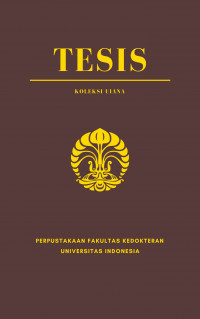Tesis
Stereotactic radiosurgery versus whole-brain radiotherapy dengan atau tanpa tambahan stereotactic radiosurgery pada metastasis otak : sebuah telaah sistematis = Stereotactic Radiosurgery versus Whole-Brain Radiotherapy with or without Stereotactic Radiosurgery in Brain Metastases : A Systematic Reviews.
Whole-brain radiotherapy (WBRT) masih menjadi standar pengobatan metastasis otak. Pada metastasis otak dengan jumlah lesi terbatas stereotactic radiosurgery (SRS) dapat memberikan radiasi dosis tinggi dan lebih terfokus, namun memiliki kontrol lokal dan jauh yang jelek. Telaah sistematis ini mencoba merangkum perbandingan SRS versus WBRT dengan atau tanpa tambahan SRS berdasarkan penelitian terbaru. Lima studi ditemukan sesuai dengan kriteria inklusi (n=492) semuanya berjenis studi terandomisasi terkontrol. uJumlah subyek tiap studi berkisar dari 29 hingga 213 pasien. Secara keseluruhan 35 pasien mendapatkan WBRT saja, 244 pasien mendapatkan SRS saja dan 213 pasien mendapatkan kombinasi WBRT plus SRS. Kesintasan hidup tidak berbeda diantara kelompok terapi. Kontrol lokal dan jauh tumor lebih baik pada kelompok kombinasi WBRT plus SRS. Fungsi kognitif cenderung lebih baik pada kelompok SRS saja, namun hal ini memiliki konsekuensi berupa tingginya jumlah terapi penyelamatan untuk rekurensi. Kualitas hidup dan toksisitas cenderung tidak berbeda diantara kelompok terapi.
Kata Kunci : Stereotactic radiosurgery, metastasis otak, whole brain radiotherapy.
Whole-brain radiotherapy (WBRT) is still the standard treatment for brain metastases. Stereotactic radiosurgery (SRS) for limited brain metastases lesions can provide higher doses of radiation and more focused, but has poor local and intracranial control. This systematic review attempted to summarize the comparison of SRS versus WBRT with or without the addition of SRS based on recent trials. Five studies were found to fit the inclusion criteria (n = 492) all of them were randomized controlled trials. The number of subjects per study ranged from 29 to 213 patients. Overall 35 patients received WBRT alone, 244 patients received SRS alone and 213 patients received combination WBRT and SRS. Survival did not differ between the therapy groups. Local and intracranial tumor control were better in the WBRT plus SRS combination group. Cognitive function tended to be better in the SRS group alone, but this has the consequence of a high number of salvage therapies for recurrence. The quality of life and toxicity did not tend to differ between treatment groups.
Keywords: Stereotactic radiosurgery, brain metastases, whole brain radiotherapy
- Judul Seri
-
-
- Tahun Terbit
-
2021
- Pengarang
-
Hari Murti Wijaya - Nama Orang
Handoko - Nama Orang
Henry Kodrat - Nama Orang
Soehartati Gondhowiardjo - Nama Orang
Rahmad Mulyadi - Nama Orang
Tiara Anindhita - Nama Orang
T.B. Mayang Permata - Nama Orang - No. Panggil
-
T21223fk
- Penerbit
- Jakarta : Program Pendidikan Dokter Spesialis Onkologi Radiasi., 2021
- Deskripsi Fisik
-
xiv, 55 hal; ill; 21 x 30 cm
- Bahasa
-
Indonesia
- ISBN/ISSN
-
-
- Klasifikasi
-
NONE
- Edisi
-
-
- Subjek
- Info Detail Spesifik
-
Tanpa Hardcopy
| T21223fk | T21223fk | Perpustakaan FKUI | Tersedia |


Masuk ke area anggota untuk memberikan review tentang koleksi